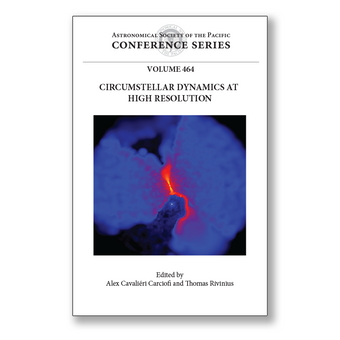Vol. 464 – Circumstellar Dynamics at High Resolution
Your purchase of this volume includes a printed copy and electronic access. With your purchase of this title online, you will receive email instructions on how to access the e-Book version. If you wish to use our printable order form and mail or fax it to us, you will need to include your email address on this form in order to receive electronic access to the purchased volume(s).
Volume CS-464
Editor(s): Alex Cavalieri Carciofi and Thomas Rivinius
Print ISBN: 978-1-58381-810-7
e-Book ISBN: 978-1-58381-811-4
Published: 2012
The term "high resolution" gained a much broader meaning to the astronomical community over the past decade or so. Large telescopes enabled even higher spectral resolution than before and rapid observation modes provided high temporal resolution. High spatial resolution instrumentation, such as adaptive optics and interferometers like the VLTI, also evolved from expert-only to general user techniques.
The joint ESO/Brazilian Workshop "Circumstellar Dynamics at High Resolution", co-sponsored by ESO, the University of São Paulo and the Brazilian agencies Capes and Fapesp, was held to sum up and provide an outlook about the great advancements that "high-resolution" brought to the field of hot star research. The meeting hosted about 70 participants from 14 countries, who gave 18 invited and 23 contributed talks, and presented more than two dozen posters. The meeting format was designed to provide ample opportunity for discussion and direct exchange between the participants.
The session topics focused on new information about the stars proper and their immediate environment, ranging from star formation over magnetospheres and tidal and other binary interaction to circumstellar disks and winds. A special session was dedicated to Be stars as "Laboratories for Circumstellar Disk Physics" and the recent periastron of the Be binary δ Scorpii.
This book is of interest for researchers in stellar astronomy, and presents an overview of the relevant results and the progress made in the field of hot stars in the past several years.
For more information about this publication and other ASP Conference Series Proceedings, click here (a new browser window will open).


